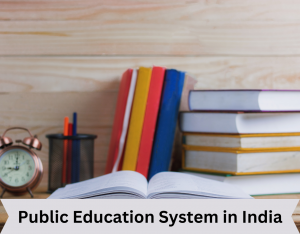ForumIAS announcing GS Foundation Program for UPSC CSE 2025-26 from 19 April. Click Here for more information.
ForumIAS Answer Writing Focus Group (AWFG) for Mains 2024 commencing from 24th June 2024. The Entrance Test for the program will be held on 28th April 2024 at 9 AM. To know more about the program visit: https://forumias.com/blog/awfg2024
Source: This post on India’s public education system has been created based on the article “Our school infrastructure needs a revamp to flatten its pyramid” published in “Live Mint” on 22nd February 2024.
UPSC Syllabus Topic: GS Paper 2 Social Justice – Issues relating to Education.
News: The article discusses the importance of investing in education. It also highlights the improvements being seen in India’s public education system, and the challenges which still remain. Public Education System in India
Why is investing in education important?
- Leveraging Demographic Dividend: Investing in public education systems is crucial for countries seeking to leverage their demographic dividend.
For instance, South Korea’s emphasis on education significantly improved literacy rates and provided the necessary skills for industrial and technological sectors, which contributed to its economic development. - Economic Growth: Empirical research shows that educational investment is positively correlated with economic growth.
For instance, according to World Bank studies, each additional year of schooling is associated with up to a 10% increase in individual earnings, and countries prioritizing educational quality generally exhibit higher economic growth rates.
What are the improvements being seen in India’s public education system?
The Unified Digital Information on School Education (UDISE+) 2023 data shows that there were significant advancements seen in India’s public education system. These include:
- Decrease in Pupil-Teacher ratio (PTR): It has seen a remarkable decrease across all levels of education, signifying smaller class sizes and more individualized attention to students. It reflects an effort to improve the quality of education through increased teacher recruitment.
- Gender Parity in Teaching Staff: The teaching staff has attained a gender balance, with female teachers now comprising 52.3% of the workforce in 2022-23, up from 46.9% in 2014-15.
- Rise in Learning Outcomes: Between 2013 and 2022, the number of students within the public education system passing with 60% and above has surged, with ‘pass’ students in Class 10 rising from 5.8 million to nearly 9.8 million and in Class 12 from 3.6 million to over 4.3 million.
- Rise in Female Education: The pass rates of female students rose by 72% in Class 10 sand 87% in Class 12, surpassing the improvement rates of male students.
What is the ‘Pyramidal Structural’ challenge in India’s public education system?
The Right to Education (RTE) Act of 2009 mandated distance norms for primary and upper-primary schools (1km and 3km respectively). This significantly increased accessibility to education. It expanded educational infrastructure, particularly at the primary and upper-primary levels.
However, the Act’s focus on elementary education has led to:
- Scarcity of secondary and higher secondary schools: There are 743,000 schools at the primary level, accounting for 50.7% of all schools. However, only 150,000 schools (10.3%) are present at the higher-secondary level.
- Disproportionate allocation of resources for elementary schooling: As a result, according to UDISE+ data, there are 122.5 million enrolments in primary schools. However, it decreases to 38 million at the secondary level, and only 27.8 million at the higher-secondary level.
Read More UPSC Topics-
What should be done?
- Increasing secondary and higher-secondary seats.
- Enhancing educational access.
- Ensuring a smooth educational progression with sufficient infrastructure and teachers at the state level.
According to the authors, it is the responsibility of state governments to implement these critical steps. Addressing this pyramidal shrinkage is crucial to tackle educational disparities and unlock India’s human capital potential.
Question for practice:
What is the ‘Pyramidal Structural’ challenge in India’s public education system? What should be done to resolve it?





